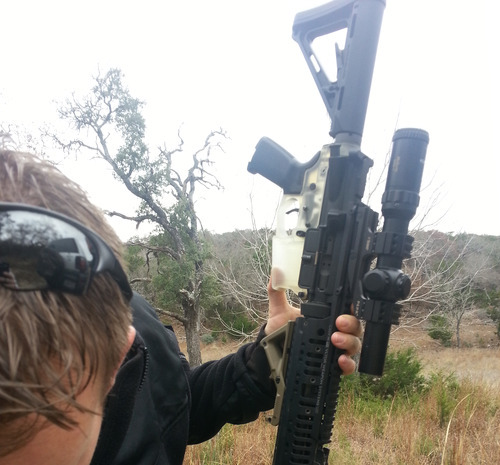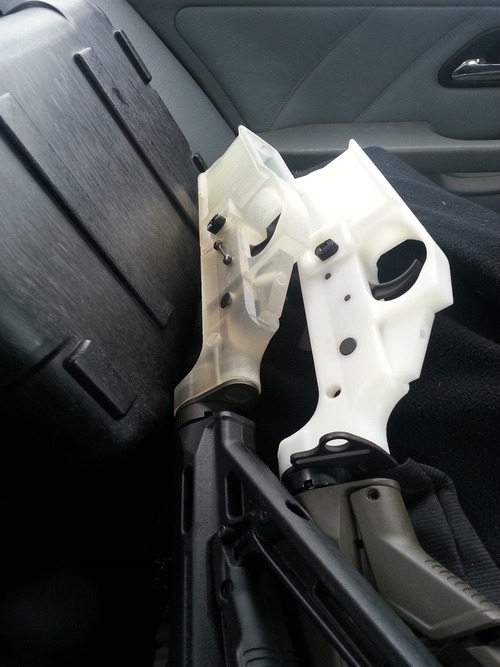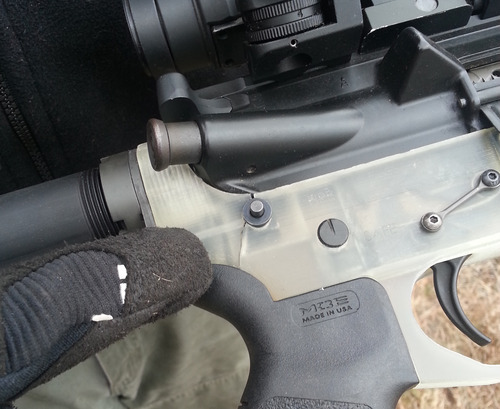Major improvements have been made in 3D printed AR15 rifles. The part of the rifle that is defined as a gun by federal law is the only part printed. The rest of the parts are commonly available on the free market.
People have made guns at home since guns were invented in the 1500’s or before. However, the ability to print out your own AR15 lower receiver at home, without having to use steel files, a grinder, or other home workshop tools, has caught the attention of the public in this digital age.

Defense Distributed is the organization that aims to make the promise of the Second Amendment a practical reality for everyman at the touch of a button. No longer will criminals in and out of government be able to be reasonably certain that their victims are unarmed.
The first AR15 lower printed by Defense Distributed was matched to a barrel chambered for the 5.7x28 cartridge, a pistol/rifle round less powerful than the more common .223. It failed after six rounds.
All of their design work and testing is now being done for and with the .223 cartridge. Several different printers and technologies have been tested. Stress analysis with sophisticated engineering design tools has been used to reduce the number of prototypes required. The lowers will now work reliably for 40-60 shots before failing. The highest round count so far has been over 80.

The failures occur at the rear take down pins, through to the hand grip.

Defense Distributed believes that their latest improvement will be reliable for 100 rounds. They expect to release the build files to the public in the next few weeks.
They will dedicate it to Joe Biden and company.
Dean Weingarten






4 comments:
I think that the printed receiver is a neat thought exercise, but this is certainly not a way to "stop tyrants" when you are still completely dependent upon a supply chain for complicated manufactured items to turn the receiver into an actual weapon.
What they need to do is stop patting themselves on the back and look what they actually have in their hands. The idea is to have a, per current US law, unregistered rifle for which they are able to manufacture the controlled part. Thus, dovetailing with that philosophy, they need to find a way to improve the inherent weakness of their design in the most robust way possible. Some ideas:
1. Redesign with an aluminum rear component that takes the main stress points and has a gas tube interface that would mate with the printed receiver with push pins so that you don't have a weird threaded polymer interface. It could even be a simplified part that is a little friendlier for a home workshop to install than the milspec one. Or, it could be sold as a complete stock component, with furniture fully installed, and ready to be attached to the printed receiver. This will do the most to mitigate the breaking of the receiver, I think. This would be a pretty simple part for a machine shop to manufacture and could be VERY cheap in volume. Created and distribute the CNC files and manual machinist drawings with the printed receiver package.
2. Print holes oversized and use a steel or aluminum insert "ring" deal like NFA repair guys do with registered receivers that get beat to pieces. Have these at any stress / pivot point. Provide specs and drawings for these parts with the package.
3. Make every supplemental component really simple and easy to manufacture so that third parties can crank these out for very low cost, i.e. use a standard material size wherever possible to require as few manufacturing steps as possible. Make it next to impossible to control these components as gun parts.
In sum:
a. Instead of replicating a controlled part with this technology and being disappointed, modify the design of the controlled part to take advantage of the strengths and mitigate the weaknesses of the printing technology.
b. More robust design will require components via cottage industry, but make them part of the package, i.e. you can order online or a competent shop can crank them out in East Bumfuck and distribute locally or online.
I suspect that this will be the focus as this cottage industry evolves. Those shops that "rent" CNC time to manufacture receivers are another good idea, but too easy to shut down. Having lots of different shops making components that interface with the AR-15 pattern to create "anything you want" is absolutely the best bet for the US market in negating the power of gun control.
That said, all the other components out there upon which these designs are dependent are also vulnerable to control. Magazines are a really tricky area, as are barrels. The solution here for small groups is to stockpile magazines in rifle, pistol and SMG format, as well as barrels in the necessary calibers, and find local manufacturers that can turn a barrel blank into something useful.
I personally believe that the most relevant thought exercise is to develop CNC plans for magazine dies that could be cranked out in a small shop.
I love this. I will build at least one of these as soon as I have the plans. Everyone should build a weapon like this, it's a great platform.
Or even simpler... just print the whole pistol grip along with the receiver. Then there is no weak spot.
Lot of information is helpful in some or the other way. Keep updating the blog, looking forward for more content...Great job, keep it up.
printmalaysia
Post a Comment